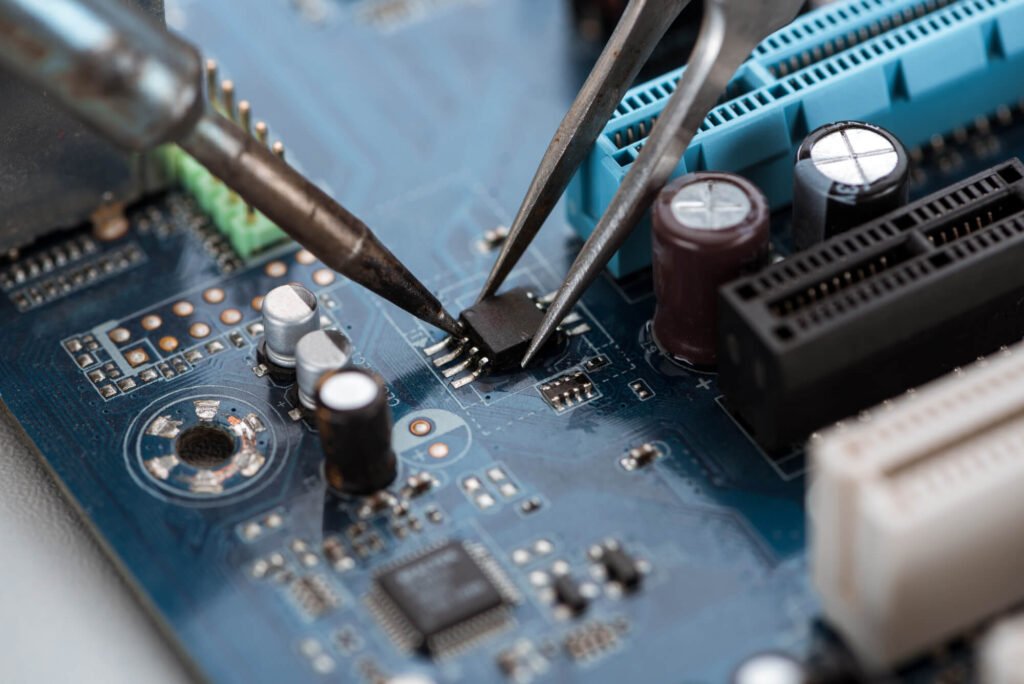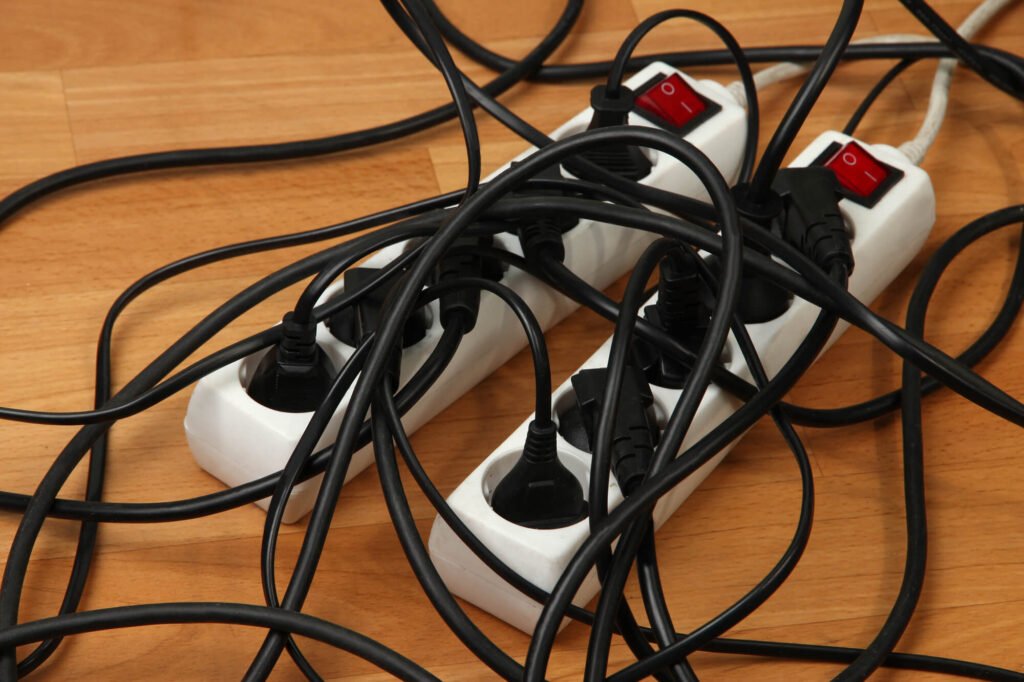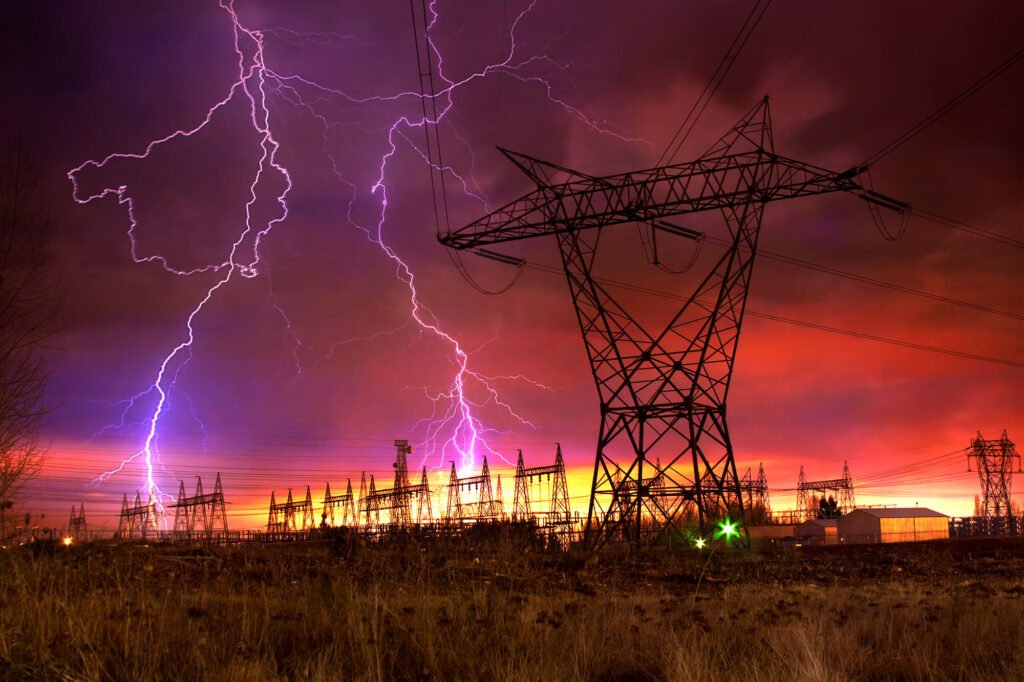What is a Power Surge?
A power surge is a sudden temporary influx of electricity in the network. They occur regularly as power flow is interrupted and starts again or when additional electricity flows back or into the network.
Homes are increasingly reliant on consumer and mobile electronics. From TV’s and sounds systems, microwaves and your wireless network to the devices and appliances we rely on day-to-day such as dishwashers, washing machines and refrigerators. These all contain microprocessors and other digital components that are sensitive to anything more than 10 volt (v) power fluctuation.
During a damaging power surge, the voltage can massively exceed the power input threshold of electronic circuits causing damage to electronic appliances and devices in our homes. Large power surges fry microprocessors, melting plastic and metal components in electronic devices. Yet even small surges can cause cumulative damage to electronic microprocessors and circuitry and create faults in your home wiring that increase the risk for electrocution and electrical fires.


NSW Power Supply AC 230v @ 50Hz
Here in NSW, your home wall sockets operate on a 230 volt (v) alternating current (AC) supply at a frequency of 50Hz. The nature of AC power supply is that voltage is known to oscillate safely between 220 – 240v. The majority of power surges in your home are due to internal causes, they occur throughout the day and go largely unnoticed fluctuating within this “safe” range.
Any electrical device that you buy here in Australia should be designed to meet our 220-240v rated electricity supply. Take care though when sourcing electronics from overseas, be sure to check the specifications of the item for the electrical supply input as connecting electronic devices to the wrong type of power supply is a surefire means to damage and destroy the sensitive electronic circuits.
Manufacturers have considered power input differences in the design of many consumer electronics. Mobile devices such as your phone, tablet or laptop, digital cameras and electric toothbrushes will most often have labels on the charging device which will work in any country provided the label states ‘INPUT: 100-240V, 50/60 Hz’.
Five Signs of a Power Surge
While most of the power surges in your home will be small enough to remain below the 240v threshold, here are five signs of more damaging power surges to help you recognise and protect your home from the dangers.
- Loss of wireless signal in your home, a power surge may cause a temporary power cut and as your wireless networks restart you may notice a lack of internet and or wireless network access
- Digital clocks around your home may be flashing and awaiting reset.
- Lights or commonly used devices may turn off due to a tripped fuse
- A surge protector or power board fuse may have switched to off position, awaiting reset
- A burning rubber or electrical smell is a sure warning of electrical hazard
Power Surges in Your Home
Problem: Motorised Appliances
Motorised appliances with a large start-up power draw such as refrigerators and air conditioning units – disrupt the power flow causing power surges as they turn on and off. For this reason, it is recommended that these appliances have an independent power source.
Fix: Isolate
It’s a good idea to check yourself to ensure large appliances are not plugged into a power board and even if they are sharing a double wall socket, move the other appliance (perhaps microwave) to a different power source. A qualified electrician can further isolate the power supply of these large appliances from other power sources in the home which can significantly reduce the potential for damage from this type of power surge.
Problem: Powerboards
Nearly every home will have at least one example of an overloaded power board they are commonly in an office space, around computers and the main charging hub in your home. Even power boards with surge protectors will eventually fail, increasing the likelihood of damage to any electronics sharing the same power supply during a power surge.
Fix: Overloaded Circuits
You can reduce the risk of power surges by alleviating overloading around your home.


Problem: Power Hungry Appliances
Power tools, hairdryers and toasters can cause power surges and while they might not knock out your power even minor surges can cause incremental damage to electrical circuits causing “electronic rust,” degrading internal circuitry and effectively shortening the life of your mobile devices and appliances connected to the same power supply.
Fix: Unplug Electronics
A simple effective way to protect your electronics from even minor power surges is to unplug electronics when they are not being used, with the bonus being that you’ll save power too.
External Causes of Powers Surges
Problem: Contact with Power Lines
Trees touching power lines, vehicle accidents, anything causing lines to touch or arc out can lead to power surges as the flow of power is interrupted and surges or as the flow of power increases significantly.
Problem: Wildlife
Although most electrical equipment includes protection against wildlife, it remains possible for rodents, snakes and other small animals to access and cause short circuits at a transformer or power substation, which are known to cause power surges.
Problem: Lightning Strikes
In Australia, lightning strikes are a leading cause of external power surges. When lightning connects with the power supply network it can surge thousands of volts causing major failures and permanent and irreparable damage to electronics in your home.


Fix: Identify Warning Signs
Lights that flicker or dim when the refrigerator or air con kicks in, frequently blown or tripped fuses are warning signs of a problem with the wiring in your home or circuit board due to damage (over time) from external power surges. And while external causes are out of your control there are ways to protect your home from the ravages of power surges with the help of a qualified electrician to test, identify and repair this type of power surge damage.
How to Protect Your Home & Family from Power Surges
Switchboards
Homes are required to have a switchboard installed containing multiple fuses that route and regulate (on/off) the flow of electricity around your home. Your fuse box is designed to safeguard people and property against electrical dangers such as electrocution or electrical fires by cutting the power supply when issues, such as a power surge, occur. However, the switchboards of the past were not designed to accommodate the increasing power demand of modern appliances. Your switchboard may require an upgrade to give your appliances and other electronics the stable current they need to operate well.
Surge Protectors
Surge protectors protect your electronics by absorbing any sudden increases of power, ensuring your electronics receive a stable amount of electricity, even when there is a surge in the system.
Safety Switches
Safety switches monitor the power flowing through the cable and shut it down immediately if there is any fluctuation. This can protect you from electric shock in the unfortunate event that you drop your hair dryer in the sink full of water or your toddler inserts a fork into an electric socket.
Maintaining your switchboard and installing safety measures, like surge protectors and safety switches, will help to reduce the risk of electrical fires and electric shock in your home, keeping you and your loved ones as safe as possible. For more information and expert advice on power surge protection in your home call the team at Absolutely On-Time Electrical.
